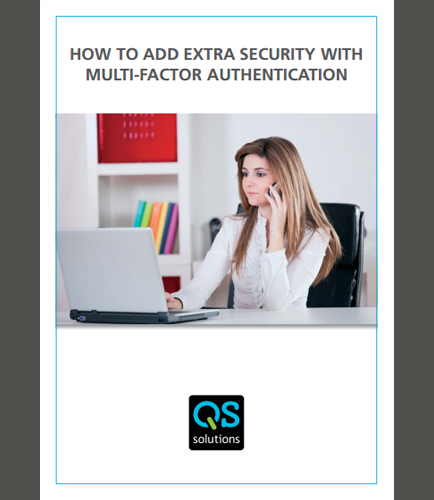
PROCESSING. PLEASE WAIT...


White Paper: QS solutions
Multi-Factor Authentication (MFA), is a very secure method for providing access to systems and data because it requires a second authentication factor.
A large number of organizations use Multi-Factor Authentication to provide extra security for company critical data. Azure MFA can help to protect access to data and applications and meets user requirements for a simple login procedure without the necessity for additional hardware tokens.
This white paper provides an insight into Multi-factor Authentication which covers:
Why do we need multi-factor authentication? How does Azure MFA work?
How to enhance security with multi-factor authentication? How does it provide uniform functionality to its end users?
How can you successfully implement Azure Multi Factor Authentication?
By: Software AG
Digital business transformation is based on an IT architecture transformation with a roadmap for digital capability implementation. Based on the software platforms, digital companies create enhanced or totally new business models which offer completely new digital customer experiences. Established companies are building up software know-how and are acquiring software companies to accelerate their digital transformation by injecting software innovation capabilities into their core business areas. This whitepaper helps to understand what makes today’s digital challengers attractive to customers and consumers, as it highlights their core competencies and differentiators based on their digital software-based technology. Key takeaways from this whitepaper: Digital challengers separate companies from their customers Implementing digital capabilities for digital use cases Digital companies have a micro services-oriented, scalable IT architecture
By: I-Sprint Innovations
In the digital era, financial institutions need to meet and exceed the expectations of a new generation tech savvy users with digital broadband access to on-demand cloud-based services via a wide range of mobile devices. In order to earn customers’ trust and confidence in their digital channels, financial institutions will have to secure identity and manage cross-channel access while leveraging mobility and the cloud. This whitepaper provides insights on how financial institutions can secure identity and data in a hyper-connected world where the data center perimeter has blurred and the enterprise attack surface has radically expanded with increased cloud adoption and mobility. Case studies illustrating how financial institutions are implementing prudent steps to engage customers across multiple channels Ultimate aim of the omni-channel initiatives Emerging methods of authentication How to boost security and compliance while ensuring differentiated customer experience in omni-channel service delivery


 2025 All Rights Reserved | by: www.ciowhitepapersreview.com
2025 All Rights Reserved | by: www.ciowhitepapersreview.com